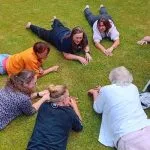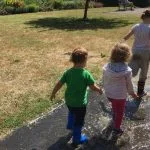Showcasing the benefits of outdoor learning for health and wellbeing
Outdoor Learning – Health and Wellbeing
The evidence that we’ve included on this page helps support the work that we do across the world. The health and overall wellbeing of future generations is one of the reasons we undertake such a wide range of projects.

Do you want to find out more?
Then take a look at who makes up our Advisory Boards, Trustees and Governors.
Then take a look at who makes up our Advisory Boards, Trustees and Governors.
Image Source: Malcolm Cochrane
Links between Natural Environments and Physical Activity: Evidence Briefing
This evidence briefing examines the link between physical activity and natural environments. The evidence suggests that physical activity in natural environments is more beneficial to health than that undertaken in other environments and that people enjoy it more.
Natural England (2016)
The Crucial Role of Recess in School
Recess represents an essential respite from rigorous cognitive tasks. It affords a time to rest, play, imagine, think, move, and socialize. Recess also helps young children to develop social skills required for wellbeing that are otherwise not acquired in the more structured classroom environment. After a recess break, children and young people are more attentive and better able to perform cognitively.
American Academy of Pediatrics (2014)
Associations between Objectively Measured Physical Activity and Academic Attainment in Adolescents from a UK Cohort
Evidence from this large-scale population study confirms the long-term positive impact of moderate-to-vigorous physical activity on academic attainment in adolescence. Findings should provide greater impetus for school-based physical activity promotion.
iBooth, Leary et al (2013)
Children in the Outdoors
A literature review investigating the positive relationship between children’s use of outdoor green space and their health and wellbeing.
Sustainable Development Research Centre (2009)
Nearby Nature
This study found that in a rural setting, levels of nearby nature moderate the impact of stressful life events on the psychological well-being of children. Specifically, the impact of life stress was lower among children with high levels of nearby nature than among those with little nearby nature. Implications of these finding are discussed with respect to our understanding of resilience and protective mechanisms.






